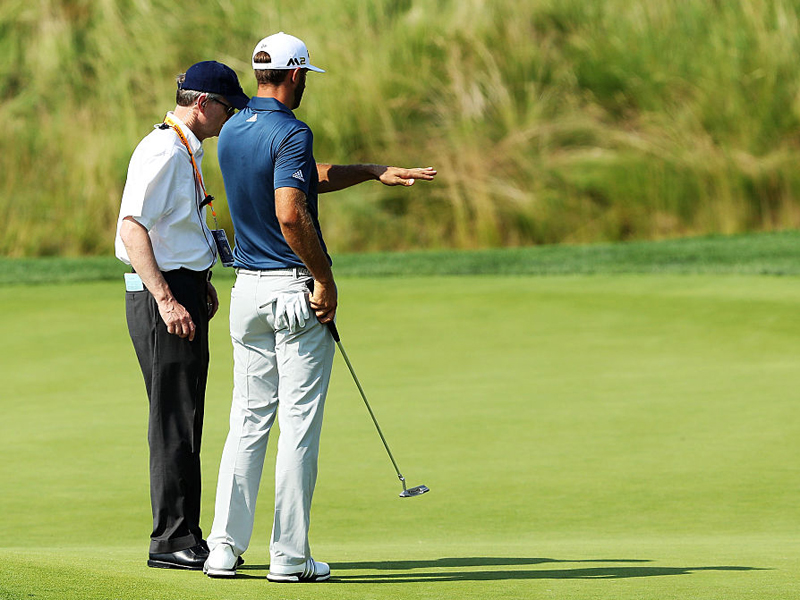What The Rules Say About Johnson's Ball Moving
Here's the Rule that decided Dustin Johnson's penalty...

On the fifth green during the final round of the 2016 US Open, Dustin Johnson's ball moved as he went to address it. Here's the all important Rule that will decide his fate...
Rules of Golf - Decision 18-2/0.5
When a player’s ball at rest moves in the US Open, the cause of the ball’s movement has to be assessed. In many situations, the answer will be obvious (the player may have dropped his equipment on it).
In other situations, however, there may be some question as to why the ball moved – e.g. because the player’s actions near the ball caused it to move, or because multiple factors were present that potentially might have caused the ball to move. All relevant information must be considered and the weight of the evidence must be evaluated. Depending on the circumstances, the relevant considerations may include, but are not limited to:
• The nature of any actions taken near the ball (e.g. practice swings, grounding club) • Time elapsed between such actions and the movement of the ball, • The lie of the ball before it moved (e.g. on a closely-mown area) • The conditions of the ground near the ball (e.g. degree of slope) • Wind, rain and other weather conditions
If the weight of evidence indicates that it is more likely than not that the player caused the ball to move, even though that conclusion is not free from doubt, the player incurs a one-stroke penalty under Rule 18-2 and the ball must be replaced. Otherwise, the player incurs no penalty and the ball is played as it lies.
With reference to the considerations above, examples of situations where the weight of the evidence would indicate that the player caused the ball to move are:
• A player’s ball lies on a flat portion of the putting green on a day with light winds. The player addresses the ball and the ball immediately moves. Under these circumstances, it is more likely than not that the act of addressing the ball caused the ball to move.
Subscribe to the Golf Monthly newsletter to stay up to date with all the latest tour news, equipment news, reviews, head-to-heads and buyer’s guides from our team of experienced experts.
With reference to the above, examples of situations where the weight of the evidence would indicate that the player did not cause the movement are:
• On a very windy day, a player addresses the ball on the putting green. A short time later the ball moves slightly in the direction the wind isblowing. The strength and direction of the wind and the delay in the movement of the ball after the club was grounded indicate that factors other than the player are more likely than not to have caused the movement.